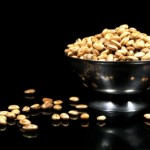 Bacteria live naturally in our digestive tract as “defenders of the gut”, helping with nutrition, digestion, and immunity. One recent trend in nutrition is to consume more bacteria in the diet to ramp up these activities in the gut, thereby promoting health. The live microorganisms in the diet are termed probiotics. Probiotics are found in fermented foods but in the US, these foods are limited and often do not contain live cultures in the final products. The best source in the US for live and active cultures other than probiotic supplements is fermented dairy, such as kefir, yogurt, and cheese. There are also many nutrition bars and drinks emerging on the market but their probiotic content and efficacy are unclear.
Bacteria live naturally in our digestive tract as “defenders of the gut”, helping with nutrition, digestion, and immunity. One recent trend in nutrition is to consume more bacteria in the diet to ramp up these activities in the gut, thereby promoting health. The live microorganisms in the diet are termed probiotics. Probiotics are found in fermented foods but in the US, these foods are limited and often do not contain live cultures in the final products. The best source in the US for live and active cultures other than probiotic supplements is fermented dairy, such as kefir, yogurt, and cheese. There are also many nutrition bars and drinks emerging on the market but their probiotic content and efficacy are unclear.
Now for the two million dollar question – should I give my child probiotics? Hard to say. No two types, or strains, of bacteria have the same effect in the gut. Thus, it is hard to determine which strain of bacteria at which dosage helps with which health issue. One area that looks promising is antibiotic-induced diarrhea. Antibiotics can eliminate all bacteria in the gut, both good and bad, frequently resulting in diarrhea. Current research suggests that probiotics, taken anytime up to two months after antibiotic use, may help prevent this. For infectious diarrhea, the kind that spreads like prairie fire through kids, the research is not quite as strong. Probiotics may help decrease the duration of diarrhea by roughly one day. For lactose intolerance, allergies, and certain diseases, research still needs more time to fully examine probiotics, including best strains, delivery, and dosages, especially for supplemental use of probiotics.
Check out www.usprobiotics.org for more information.

